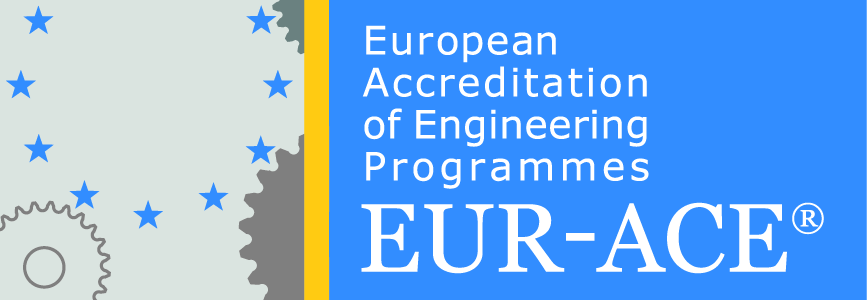| 1. | Course Title | Coding Theory, Secure Communications and Blockchain Technologies | |||||||||||||||
| 2. | Code | 4ФЕИТ10030A | |||||||||||||||
| 3. | Study program | Dedicated Embedded Computer Systems and Internet of Things | |||||||||||||||
| 4. | Organizer of the study program (unit, institute, department) | Faculty of Electrical Engineering and Information Technologies
Ss. Cyril and Methodius University in Skopje |
|||||||||||||||
| 5. | Degree (first, second, third cycle) | Second cycle | |||||||||||||||
| 6. | Academic year/semester | Year | 1 | Semester | 1 | ||||||||||||
| 7. | Workload measured by number of ECTS credits | 6 | |||||||||||||||
| 8. | Lecturer (In case of several lecturers to note the responsible one) | D-r Aleksandar Risteski | |||||||||||||||
| 9. | Language of teaching | English | |||||||||||||||
| 10. | Course Prerequisites | None | |||||||||||||||
| 11. | Course Goals (acquired competencies) and study results:
Ability to perform thorough analysis of codes and coding schemes; application of coding techniques in various technologies and systems; thorough analysis of cryptographic protocols, algorithms and security mechanisms and their application in ICT systems; thorough analysis and implementation of blockchain technologies. Readiness for research in these areas. |
||||||||||||||||
| 12. | Course Syllabus (with Chapters) and study results for each chapter:
1. Coding theory Review of modern coding techniques: application of coding schemes in optical / wireless / mobile / satellite communication and ICT systems. Performance analysis of various codes: Reed-Muller, BCH, Reed-Solomon, LDPC etc. Performance analysis of concatenated coding schemes and iterative decoding. New trends in coding techniques. 2. Secure communications Advanced cryptographic techniques for secure communications. Security aspects of modern ICT systems. Steganography techniques, analysis and applications. 3. Digital currencies and blockchain technologies Trends in digital and cryptocurrencies. Trends in blockchain technologies. Analysis and implementation of blockchain technologies. |
||||||||||||||||
| 13. | Interconnection of Courses: As part of the secure communications and novel communication technologies, this course deepens the knowledge gathered from the courses: Security and reliability of computer communication systems, System Design Concepts for the Internet of Things, Numerical Methods in Stochastic Processes, and IoT Standards and Protocols. | ||||||||||||||||
| 14. | Detailed description of teaching and work methods:
Lectures; individual literature research; individual case studies; individual or team projects/seminar works; interactive discussions. During the semester, tests are conducted during the classes. Written exam is taken for a maximum of 90 minutes at the end of the semester or in exam sessions. A seminar paper or project task (team or individual) is prepared. The final grade includes points from the exam, tests and from the seminar paper or project assignment. A special instruction published before each exam regulates the manner of taking the exam and the use of teaching aids and electronic devices during the exam. |
||||||||||||||||
| 15. | Total number of course hours | 180 | |||||||||||||||
| 16.
|
Forms of teaching
|
16.1 | Lectures-theoretical teaching | 45 hours
|
|||||||||||||
| 16.2 | Exercises (laboratory, practice classes), seminars, teamwork | 45 hours
|
|||||||||||||||
| 16.3 | Practical work (hours): | 0 hours
|
|||||||||||||||
| 17.
|
Other course activities
|
17.1 | Projects, seminar papers | 45 hours | |||||||||||||
| 17.2 | Individual tasks | 0 hours | |||||||||||||||
| 17.3 | Homework and self-learning | 45 hours | |||||||||||||||
| 18. | Conditions for acquiring teacher’s signature and for taking final exam: 60% of all required course activities | ||||||||||||||||
| 19. | Grading | ||||||||||||||||
| 19.1 | Quizzes | 10 points | |||||||||||||||
| 19.2 | Seminar work/project (presentation: written and oral) | 70 points | |||||||||||||||
| 19.3 | Final Exam | 20 points | |||||||||||||||
| 20. | Grading criteria (points) | up to 50 points | 5 (five) (F) | ||||||||||||||
| from 51 to 60 points | 6 (six) (E) | ||||||||||||||||
| from 61 to 70 points | 7 (seven) (D) | ||||||||||||||||
| from 71 to 80 points | 8 (eight) (C) | ||||||||||||||||
| from 81 to 90 points | 9 (nine) (B) | ||||||||||||||||
| from 91 to 100 points | 10 (ten) (A) | ||||||||||||||||
| 21. | Method of monitoring of teaching quality | Self-evaluation and student surveys | |||||||||||||||
| 22. | Literature | ||||||||||||||||
| 22.1. | Required Literature | ||||||||||||||||
| No. | Author | Title | Publisher | Year | |||||||||||||
| 1. | Charlie Kaufman, Radia Perlman, Mike Speciner, Ray Perlner | Network Security: Private Communication in a Public World, 3rd Ed. | Addison-Wesley Professional | 2022 | |||||||||||||
| 2. | Niaz Chowdhury | Inside Blockchain Bitcoin and Cryptocurrencies | CRC | 2018 | |||||||||||||
| 3. | Tom Richardson, Ruediger Urbanke | Modern Coding Theory | Cambridge University Press | 2008 | |||||||||||||
| 22.2. | Additional Literature | ||||||||||||||||
| No. | Author | Title | Publisher | Year | |||||||||||||
| 1. | Scientific journal and conference papers, standards, recommendations, laws and bylaws (national), international regulatory acts, other literature. | ||||||||||||||||



